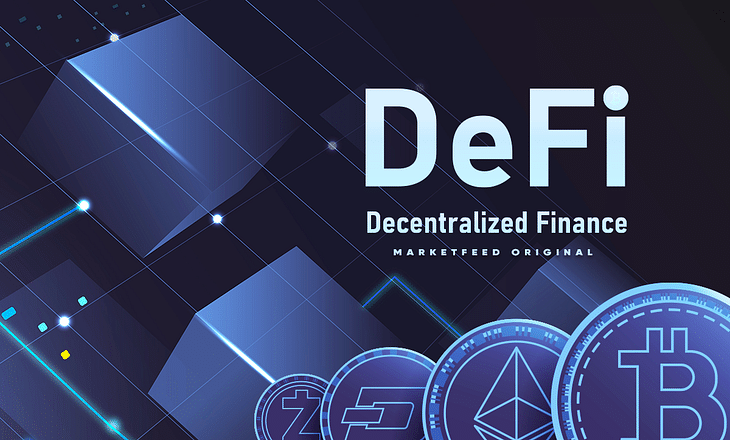The rise of Decentralized Finance (DeFi) has fundamentally changed how individuals interact with financial services. By leveraging blockchain technology, DeFi platforms provide financial services such as lending, borrowing, trading, and investing without relying on traditional intermediaries like banks. While DeFi offers many advantages, such as greater accessibility, transparency, and control over assets, it also presents unique security challenges. Hackers, attracted by the high value locked in DeFi protocols, have attempted to exploit vulnerabilities in the underlying blockchain and smart contracts, resulting in significant losses.
Despite these risks, blockchain technology itself provides several mechanisms to protect user assets and enhance the security of DeFi platforms. Understanding how blockchain contributes to asset protection in the DeFi space is essential for both users and developers seeking to safeguard their investments.
In this article, we will explore how blockchain ensures security and protects user assets from hacking in the DeFi ecosystem by focusing on decentralization, immutability, cryptography, consensus mechanisms, and transparent auditing.
1. Decentralization: A Core Feature of Blockchain Security
One of the primary ways blockchain technology protects DeFi users from hacks is through its decentralized nature. Unlike traditional finance systems, which rely on centralized institutions (such as banks) to manage user assets, blockchain operates on a peer-to-peer network of nodes. This decentralization reduces the risk of a single point of failure, which is a common vulnerability in centralized financial systems.
A. No Centralized Authority to Attack
In traditional finance, hackers often target centralized entities (e.g., banks, exchanges) to gain access to large pools of assets. A single breach can result in massive losses for customers and institutions. However, in a decentralized blockchain network, there is no central entity to attack. Instead, user assets are spread across the entire network, making it significantly harder for attackers to compromise all the participants simultaneously.
B. Resistance to Single-Point Failures
In decentralized systems, even if one or more nodes are attacked or go offline, the blockchain continues to operate because other nodes validate and store copies of the data. This redundancy ensures that the system remains resilient against hacking attempts and denial-of-service (DoS) attacks.
2. Immutability: Ensuring Transaction Integrity and Preventing Fraud
Another critical feature of blockchain that contributes to the security of DeFi platforms is immutability. Once a transaction is recorded on a blockchain, it cannot be altered or deleted. This provides several layers of security against hacks and fraud.
A. Tamper-Proof Transactions
In DeFi, transactions such as token transfers, lending agreements, and smart contract executions are recorded on the blockchain. Due to the immutable nature of blockchain, attackers cannot manipulate these transactions after they have been added to the ledger. Even if a hacker gains control of one node, they cannot change historical transactions across the network, making fraud or unauthorized access nearly impossible.
B. Transparent and Auditable Ledger
Blockchain’s transparency ensures that all users can view every transaction and contract interaction. This public ledger allows users to verify the integrity of transactions and ensures that no funds are misappropriated. The ability to track the movement of assets, for example, means that users can verify that no funds have been stolen or altered without their consent.
While attackers may attempt to exploit vulnerabilities, blockchain’s transparency provides an early warning system, as suspicious or anomalous transactions can be flagged and investigated by the community.
3. Cryptography: Protecting User Data and Assets
Cryptography plays a foundational role in ensuring the security of blockchain networks and DeFi platforms. DeFi protocols rely on advanced cryptographic techniques to protect user funds, ensure the integrity of transactions, and maintain privacy.
A. Public-Private Key Encryption
Every DeFi user has a public key and a private key. The public key serves as an address to receive funds, while the private key is used to authorize transactions and control access to the assets stored on the blockchain. The private key is known only to the user and should be kept secure. If an attacker gains access to a user’s private key, they can steal the assets stored at that address.
- Security Measures: Most DeFi platforms encourage users to store their private keys securely (e.g., using hardware wallets) to prevent unauthorized access. Losing or exposing a private key means losing control over the assets associated with it.
B. Multi-Signature (Multisig) Technology
Many DeFi platforms implement multi-signature wallets to enhance security. In this system, multiple private keys are required to authorize a transaction. Instead of relying on a single private key, a DeFi platform might require two, three, or more signatures to approve a withdrawal or contract modification.
- This significantly reduces the likelihood of unauthorized transactions because an attacker would need to compromise multiple private keys to complete an action, rather than just one.
C. Zero-Knowledge Proofs (ZKPs)
Some advanced DeFi protocols use zero-knowledge proofs (ZKPs) to enhance privacy while ensuring the integrity of transactions. ZKPs allow one party to prove to another party that a statement is true (e.g., they own a certain amount of assets) without revealing any underlying information about the transaction itself.
- ZKPs can be used in DeFi to secure private transactions and shield user data from unauthorized access, thus protecting user identities and asset balances.
4. Consensus Mechanisms: Ensuring Network Integrity and Trustworthiness
Blockchain networks use consensus mechanisms to validate and agree on the state of the ledger. In the context of DeFi, these mechanisms are essential for ensuring that all participants in the network agree on the validity of transactions and the state of the system.
A. Proof of Work (PoW) and Proof of Stake (PoS)
- Proof of Work (PoW): In PoW-based blockchains like Bitcoin and Ethereum (prior to Ethereum 2.0), miners compete to solve complex mathematical puzzles to validate transactions and add them to the blockchain. This process requires significant computational power and makes it difficult for any single entity to control the network.
- Proof of Stake (PoS): In PoS-based blockchains like Ethereum 2.0 and many DeFi protocols, validators are chosen to create new blocks based on the amount of cryptocurrency they have staked in the network. Validators have a financial incentive to act honestly, as they can lose their staked assets if they validate fraudulent transactions.
Both PoW and PoS provide security by ensuring that malicious actors cannot control the network, which in turn prevents them from altering transaction data or stealing assets.
B. Delegated Proof of Stake (DPoS)
Delegated Proof of Stake (DPoS) is an alternative consensus mechanism used in some DeFi platforms. In DPoS, token holders vote for delegates who are responsible for validating transactions and maintaining the blockchain. This system is designed to be more efficient and scalable while maintaining a high level of security.
- In DPoS-based DeFi platforms, the voting process ensures that power is distributed among trusted parties, making it more difficult for hackers to compromise the system.

5. Smart Contract Audits: Identifying and Fixing Vulnerabilities
While blockchain itself provides a strong foundation for security, vulnerabilities can still exist in the smart contracts deployed on top of it. Smart contracts are the backbone of most DeFi protocols, governing transactions and interactions between users. If these contracts are poorly coded or contain bugs, they can become targets for exploitation by hackers.
A. Independent Smart Contract Audits
To mitigate the risks of smart contract vulnerabilities, DeFi platforms often undergo independent audits conducted by specialized security firms. These audits analyze the contract code for potential flaws, such as reentrancy vulnerabilities, integer overflows, and logical errors that could be exploited by malicious actors.
- Auditors test the contracts under various scenarios to ensure that they function correctly and securely before they are deployed on the blockchain. Many DeFi platforms now require smart contract audits as a standard part of their development process.
B. Formal Verification
Formal verification is an advanced technique that involves mathematically proving that a smart contract will behave as expected under all possible conditions. While not commonly used due to its complexity, formal verification can provide an extra layer of assurance regarding the safety of DeFi protocols.
6. Community Vigilance and Transparency
The open-source nature of blockchain and DeFi means that the code is available for public inspection. This transparency creates a community-driven security model, where developers, auditors, and users can collaborate to identify vulnerabilities and improve the security of DeFi platforms.
A. Bug Bounty Programs
Many DeFi protocols implement bug bounty programs that reward security researchers for identifying vulnerabilities in smart contracts or other aspects of the platform. These programs incentivize the community to actively search for weaknesses before malicious actors can exploit them.
B. Community Governance
In many DeFi projects, governance is decentralized, with token holders participating in the decision-making process. This decentralized governance enables the community to make rapid decisions in the event of a vulnerability discovery, such as voting to freeze certain smart contracts or roll back transactions in the event of a hack.
Conclusion: A Secure Future for DeFi with Blockchain Protection
Blockchain technology provides a strong security foundation for DeFi platforms, leveraging its decentralized architecture, immutability, cryptography, consensus mechanisms, and transparent auditing to protect user assets. While vulnerabilities in smart contracts and DeFi protocols can still be exploited, the blockchain offers powerful tools to mitigate risks and safeguard users’ funds.
By promoting transparency, security audits, community participation, and advanced cryptographic techniques, the DeFi ecosystem can continue to grow while protecting users from the threats posed by hackers. As blockchain technology evolves and more robust security measures are developed, we can expect DeFi to become even more secure and user-friendly, paving the way for a more decentralized financial future.
















































